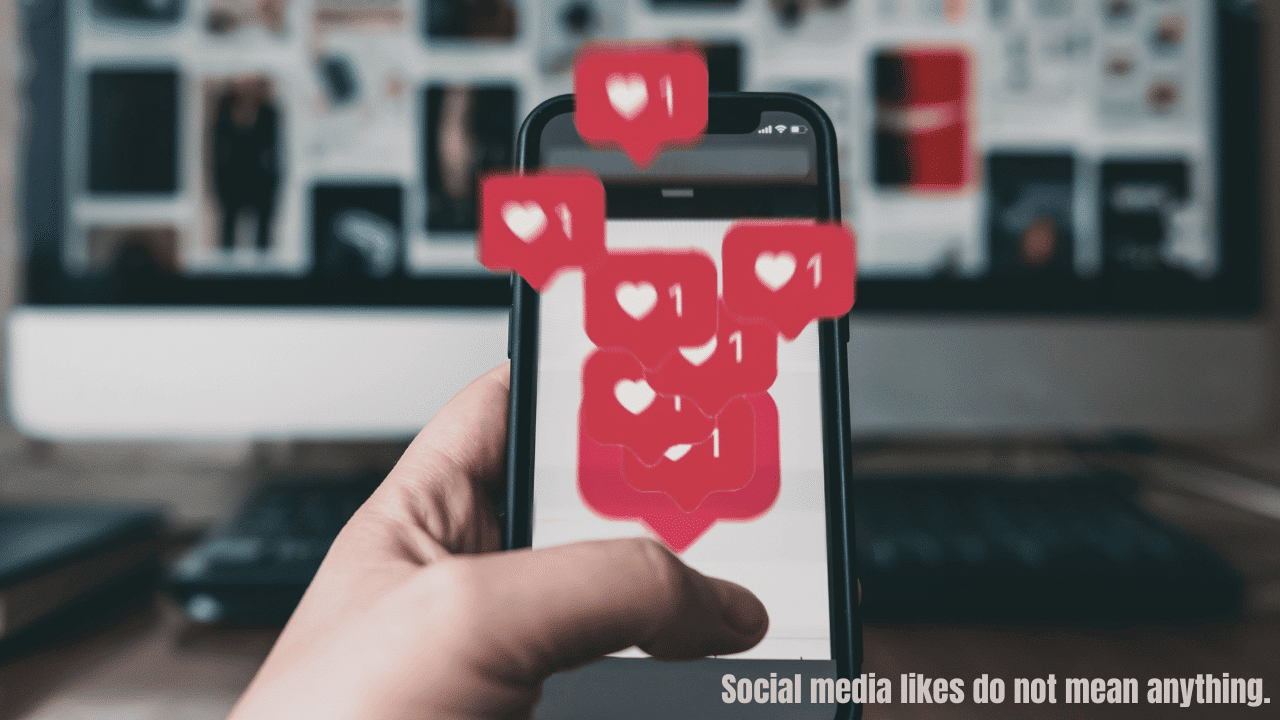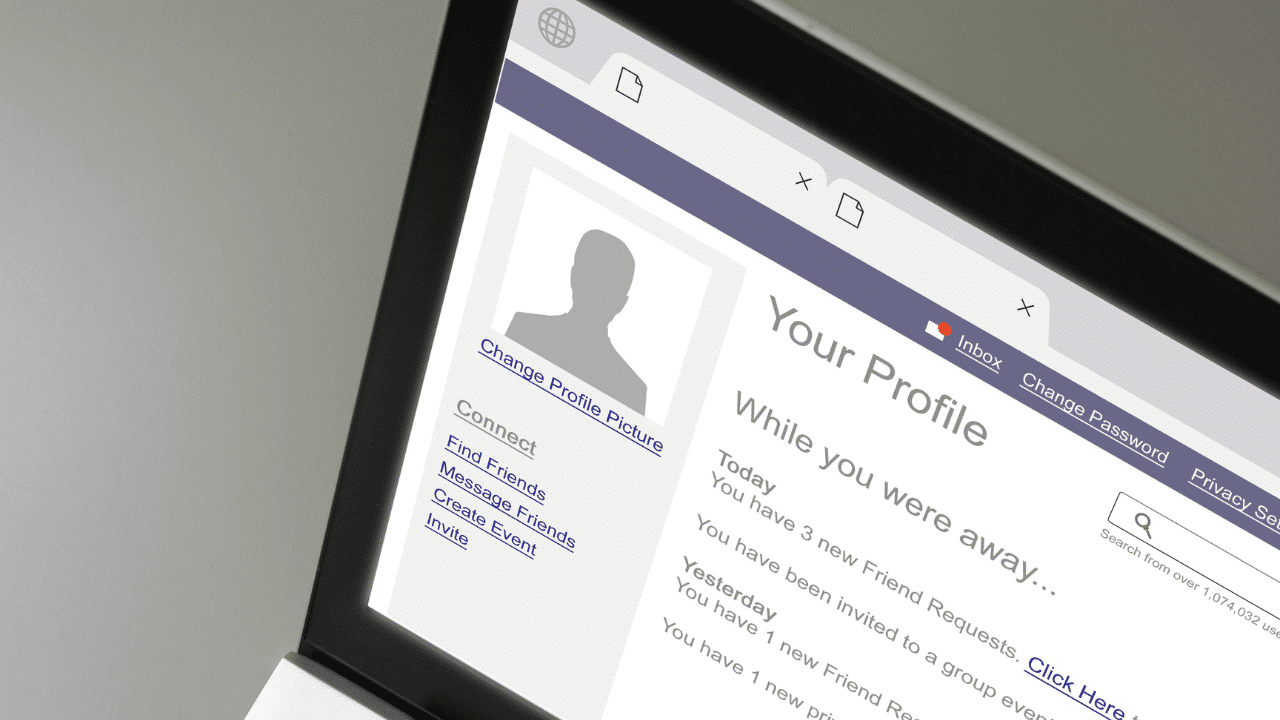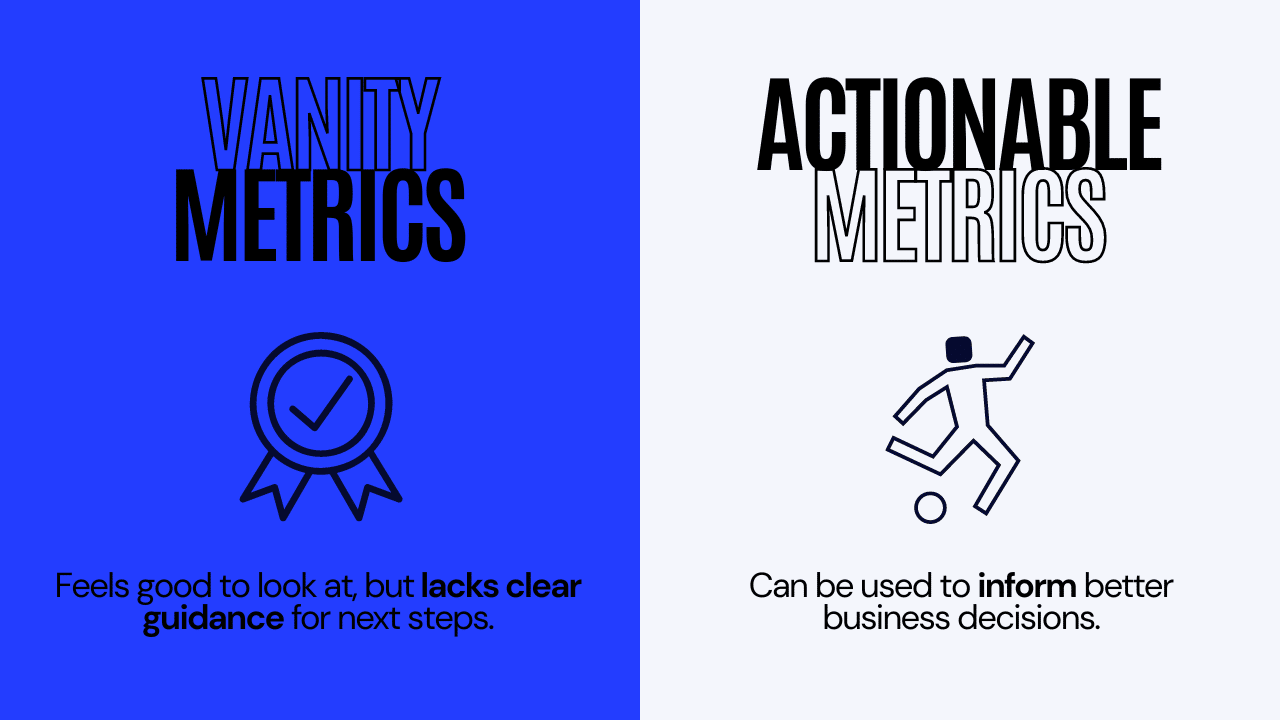Vanity metrics are the opposite of actionable metrics - they measure what “looks good” and often “feels good” but don't provide any detail worth acting on. Since these metrics are often touted as performance indicators for your marketing and advertising budget, you might be encouraged to spend more money on ads that aren't actually working.
This article will cover the vanity metrics that can keep you complacent in irresponsible ad expenditure. Towards the end, we will also cover which “one thing” you should focus on to get the most out of your marketing.
Let's get started.
1. Social Media Likes

Social media and vanity go hand in hand. And when it comes to vanity metrics (which appear to hold value but don't contribute to the bottom line), nothing is less valuable than a post like. The fact that Facebook, Google Ads, and other ad-serving platforms even track likes shows that they want bad marketers to feel satisfied.
The reason why you should disregard social media likes is that a person who likes the ad or the boosted post is not likely to remember even seeing it. The context of social media browsing is such that anything less than a comment doesn't even register.
What were the last five posts you commented on?
If you're anything like me, you have no idea unless there was a spirited back-and-forth in the comments. What does an ad even convey if people can't even remember posts they comment on?
You can use likes to compare the performance of two of your posts. This can help you decide which way the favorable opinion leans, but individual likes do not mean anything. If you're being told that your biggest win is the number of likes you are getting, especially with paid media, you should fire your marketer.
2. Ad Views
Ad views are useless whether they are measured in traditional or social media. The actual viewership of an ad matters, but platforms (including Neilsen boxes) simply calculate screenplays, not actually engaged viewership. Platforms have no incentive to figure out a way to give out the real numbers. It is the inflated number that ensures that ad money gets poured into their respective ad networks.
Ad views don't count for another reason: you can spend your way to any viewer count. It takes a savvy marketer to maximize the reach of a campaign at a minimal cost. And you can definitely track the previous cost per view against your current cost per view to see if your recent campaign is better.
The same comparison can be made with your traditional media campaigns to assess the performance of your ad-buying department. But the views alone don't provide any valuable insight.
3. Online Page Followers
Online page followers can serve as a branding goal. If your fresh social media page has over 10,000 followers, you can appear legitimate and trustworthy compared to a page with only 100 followers.
But once your page looks professional enough and has over 1,000 followers, an increasing follower count doesn't matter if a paid campaign is fueling it. The more followers you have, the better your brand's organic reach. So followers do matter. But the follower count being increased by paid ads is not worth it.
Instagram's average reach is under 10%. If you pay $2 to get a follower, you are paying 20 times more than a marketer who spends $1 to get an email opt-in.
Social media followers can matter in terms of building perception. But they remain a borrowed audience that the platform controls your access. That said, you should try to get more followers organically. Even if you can't reach them 100% of the time, at least you aren't paying for them.
4. Profile Visitors

Social media ad campaigns can track the number of people who visit your profile after seeing your ad. On the surface, this seems like a very cool metric that estimates your relevance and customer interest in your business. But this is a very evident vanity metric because the visitors' intent and subsequent actions are required to derive any substantial conclusion.
Did 1000 people visit your profile to check out your business?
Or did they visit your profile to block you so they don't see your ads in the future?
How many of the visitors are competitors looking to steal your content strategy?
How many of the visitors are bots?
There is no trusted way to answer these questions, leaving the profile visitor metric hollow and unusable. If you have no paid campaign running and your posts get carried by the discovery algorithm, then the number of page visits can mean something, though other metrics need to be considered.
5. Link Clicks
Links clicks indicate the number of people who have clicked on an online ad's target link. It can also refer to the click-through in an email campaign. Link clicks are also referred to as website clicks when they happen organically from the page's “about” or “bio” section. On the surface, link clicks seem worth maximizing. But there is no benefit of focusing on link clicks as the end result.
Here are the top 5 reasons to disregard link clicks when tracking your success:
6. Database Size
Even the most skeptical business owner can start feeling good about a growing marketing database. More leads, however, don't mean more qualified leads. (Your telesales can tell you how good or bad your database is).
But often, the database you build with online marketing is the email database. And it is hard to tell if that's worth anything, especially if the person reporting its success is relying on vanity metrics.
What Should Business Owners Measure? (Actionable Metrics)

Is online marketing hopeless since everything that seems to be tracked by default is useless? No.
You can actually measure two things that directly feed your bottom line. And whether you hire a marketing agency or a full-time advertising expert, you should insist on getting the following metrics:
Recap: Avoid Vanity Metrics, Focus on Actionable Metrics Instead!
Link visits, views, likes, and follows are useless if they are not tied to sales or customer acquisition. Do not waste money on maximizing any of these if you don't have the conversion rate data or the cost per customer acquisition.
